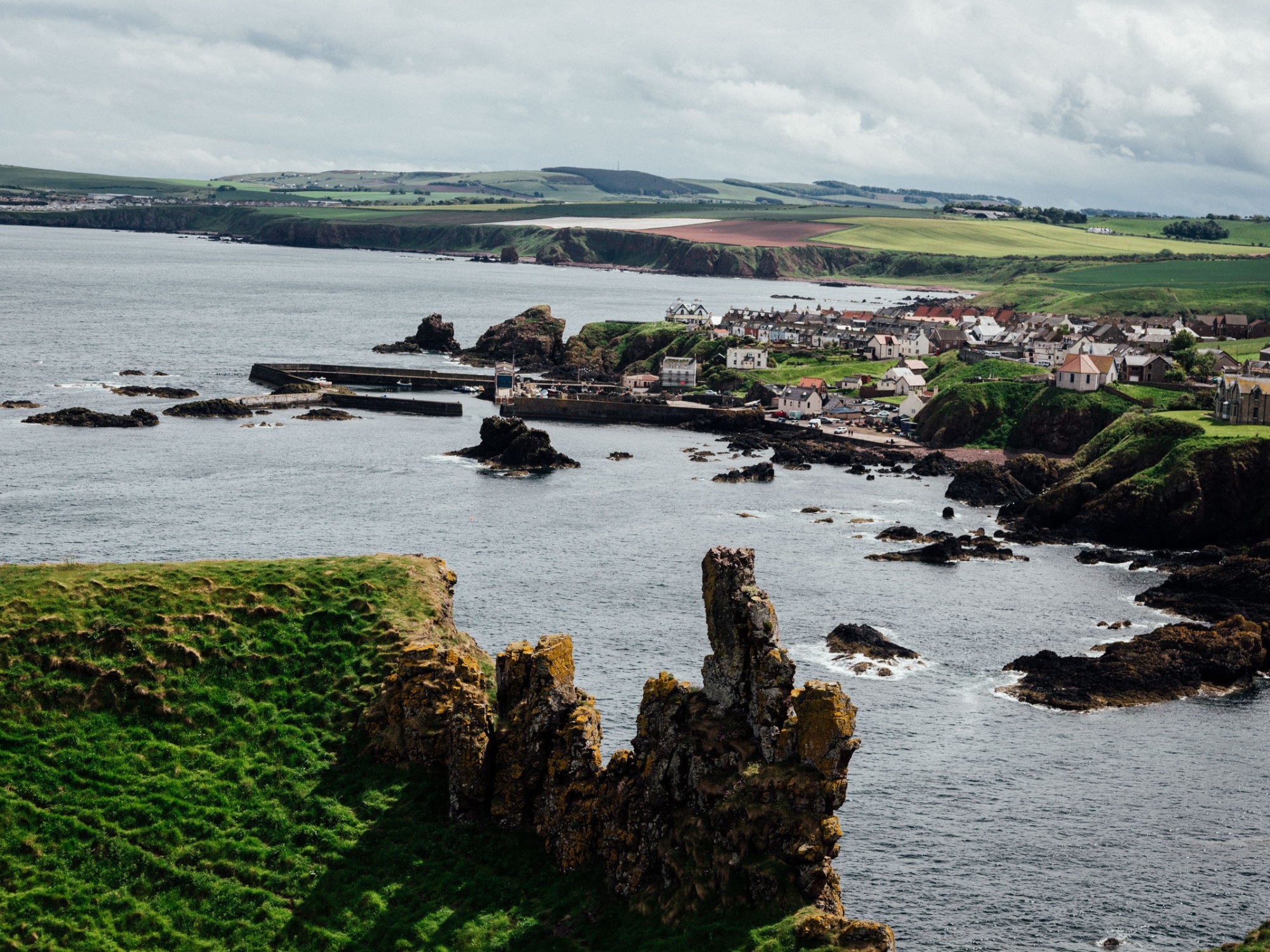I read that originally, the area was formed by an extinct volcano and the village that was erected was called ‘Coldingham shore’ and ‘St Abb’s Head’ wasn’t adopted until the 1890s, after the Northumbrian princess Aebbe, who later became a Saint – St Abbe. Overlooking the lower village, massive cliffs run by lines of what were originally fishermen’s cottages built parallel to the cliff’s edge. St Abbs (Coldingham shore), however, dates back to AD 635 (!) – though some sources say 643 – when princess Aebbe founded a monastery close to the rocky head. The only remnants of the 7th century monastic settlement are the remains of a three metre high turf rampart that protected the village. In the mid 1880s the village had established itself as a busy fishing harbour and the first lifeboat station was built in 1911. It was the only main building in the harbour itself. Today, the lifeboat station is still standing, independent and privately funded. The picturesque, though hard-to-reach, lighthouse was built in 1862 and still stands today also. Another ‘fun’ fact: the first Royal Navy ship to be sunk by a U-boat during the First World War was just off St Abb’s head, the HMS Pathfinder (1914).
Today, St Abb’s Head is the best known landmark along the Berwickshire coast and known for its unusually clear waters, which makes it a popular spot for scuba divers. The clear waters and the spectacular underwater scenery meant that Britain’s first Voluntary Marine Reserve was established at St Abbs, in 1984.
Whilst this tells me much, it does not prepare me for anything. I’ve convinced mum to make the long(ish) drive with me, hoping and praying that the one-hour+ drive from Jedburgh is worth it as we stop at Kelso and pass through Coldstream before getting there. Halfway through our trip, though, I start hoping for good weather. The skies are grey and gloomy, thick, puffy clouds rolling over our heads as if we’re in a snow globe and the clouds running along the protective glass.
Then suddenly, while bored and following the A1107, I see it – cliffs, a couple of piles of rocks and a tiny village, the typical grey-white-and-red that predicts fishermen’s town. I instantly get excited.


Fleeting, somewhere in the distance, is the all-too-familiar scent. Of salt. Of water. Of the kind of freshness you smell when there’s nothing but waves on the horizon. Sea. The grey-blue mass lies patiently in the faraway, at the bottom of where we know the road ends. We pass the field with the round picnic tables and the high-end, artsy shops on our left. We follow the footpath, the hedgerow between us and the road like a guardian holding out hands. We enter St Abb’s but the town is forgotten as quickly as we get to it – there, at the bottom of the steep footpath, where the road curves to the right and leads you away and into town, there is sea & harbour & one of the most stellar pieces of nature I have seen so far.
In the several bays there are, the water is indeed unusually clear, translucent, almost. Red-brown, yellow and white make up a mass of spikey and blunt rocks that sometimes look like they have been stacked, and sometimes look like they’ve endured the beating of an angry sea for hundreds of years. Deep, almost moss-like brown rocks are scattered around in the waters like stepping stones of giants. The water holds a fine colour, more blue and saturated than we see in Holland, but due to an overcast day turning slightly grey. And then the seagulls; specks of white like the splatter of paint on a canvas, screaming, diving, gliding, turning on the wind.
The wind tugs at our hair, our clothes, carrying the scent of sea and the echo of seagulls with it. This already is worth the ride and we haven’t seen nothing yet. I have already spotted the distinctive line that makes a footpath and now, in the distance, tiny figures walking.
Directly below us is the tiny harbour. We spot the lifeboat station and for a moment, our thoughts drifting away with the wind, we allow our eyes to trace the single storey fisherman’s cottages and the traditional terraces. We take ample time to study the monument erected in honour of the 189 fishermen who lost their lives during the 1881 East Coast Fishing Disaster, also called the Eyemouth Disaster as most of the victims were from Eyemouth. A significantly heavy, European windstorm hit the east coast, especially this particular area. The monument, it is explained, depicts the wives and children looking out to sea. Perhaps in search of their husbands, perhaps longing awaiting their return, perhaps gazing into the distance where their husbands lost their lives.


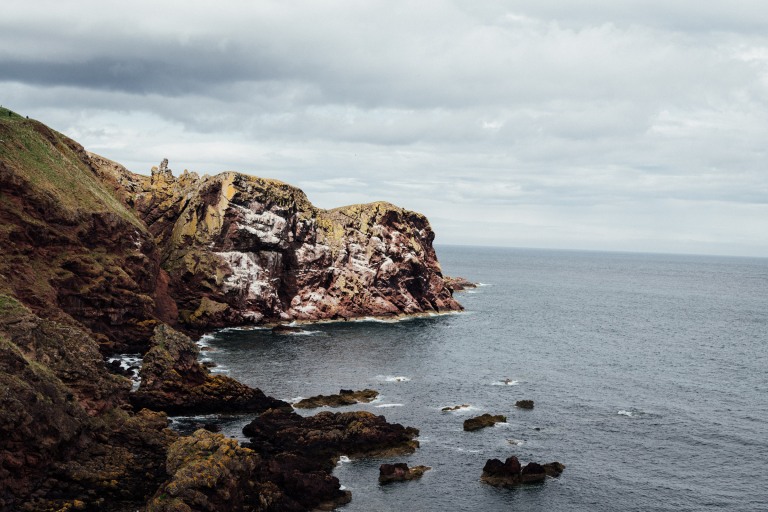
We have left the village. Calling out to us is St Abb’s Head and I’m eager to go. Mum is less pleased. The cliffs are steep and the drop is scary, albeit also spectacular. A narrow footpath, right next to the edge, guides willing adventurists to go further. The wind blows so loudly that we can barely hear each other, let alone the crashing waves below us, though the bay looks surprisingly calm. Its the seagulls mostly, who’s piercing screams ring in our ears.
The craggy path rounds along Starney Bay until it gently leads up, where fellow travelers going down make way as we stalk the promising view on the horizon. We reach a wide plain and then, in the distance, the sudden absence of earth, which indicates the ridge of the cliff. Careful not to trip, keeping the dogs close, we make our way across what feels like a dangerously fragile hanging bridge before reaching relative safety in the headland leading up to what looks like the end of the world.


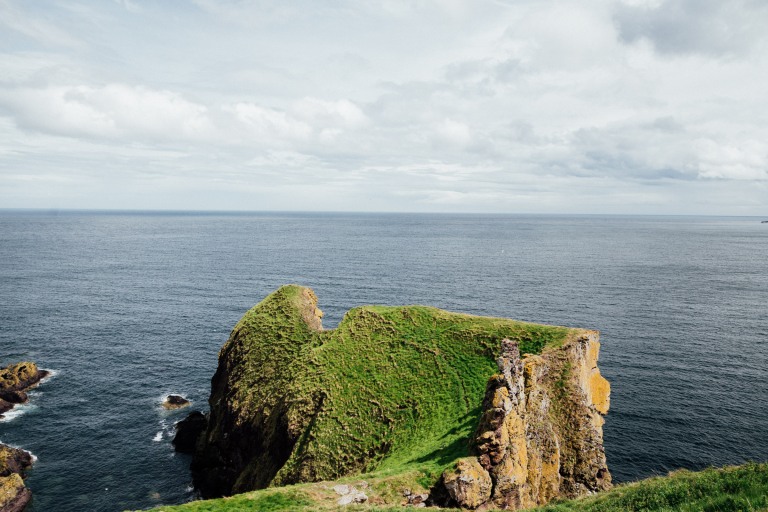
I cannot describe the grandeur, the feeling of finite existence, feeling so small & fragile. But it’s wonderful. It’s splendid. It’s a hell of a feeling to encounter when surrounded by such forces as the rocks, cliffs and the breathing sea right below us. Seagulls dip in and out of my vision as they soar between the inlets and the bays.
Every now and again, we stop to turn around, gaze at the distance that is laid out like an illusion. St Abb’s is not too far away, looking restful and quiet. I’m too afraid to peak over the edge of the cliffs, knowing too well that the drop would have to be beautiful, putting mortality into a whole new perspective.
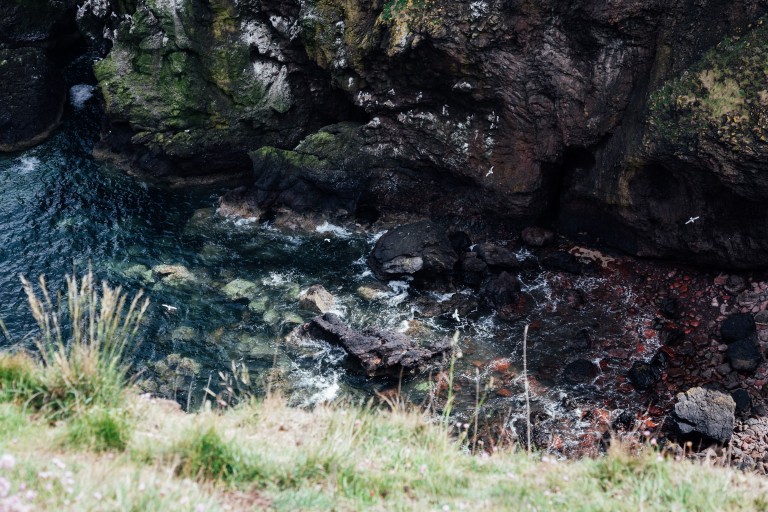
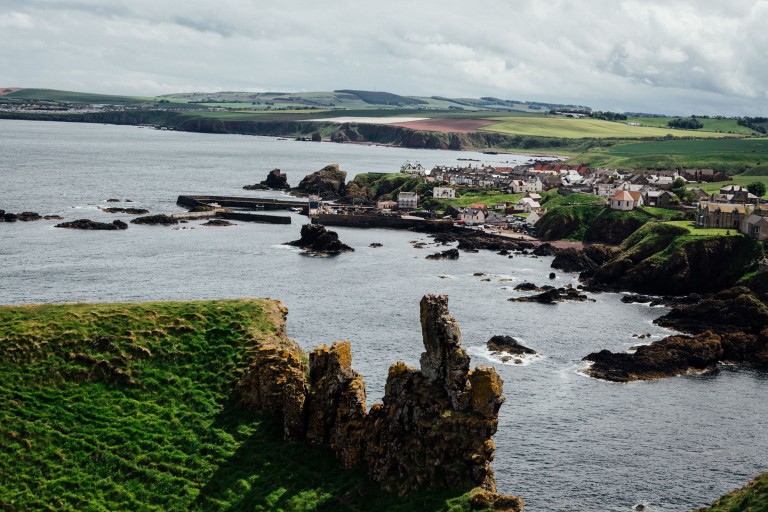
Journal entry that night:
Oh, St Abb’s Head might just be the highlight of this trip. Views, cliffs and the sea. I could have walked there for hours, exploring the whole of the coast line and escaping the hands of time as if time and mortality don’t matter, nothing but the might of wondrous nature and the rough wilderness of the things human’s haven’t completely corrupted yet.
The cliffs were so tall, the grass so green, the water so sea-green-blue and pure and clear, seagulls and wind captured in a seashell put against my ear. A (long) break in the rain and we were spoiled with sunshine. This is England looking after us. We’ve experienced it before.
I remember carefully looking down the cliffs, still several feet away from the edge, and actually not being afraid at all. Every minute spent there, in fact, I spent in comfort, wrapped around me like a blanket and a lullabye.
There is a difference between truth and reality. Truth can be reality just like reality can be truth, but they’re not essentially, existentially, the same. There is always a certain amount of distance between them. Truth is that we were there, gazing up, gazing down. In reality, we were always tiny; either tiny specks at the foot of the cliffs or on top of them, thinking of ourselves as tall or small as we were before, while in reality we haven’t changed in size at all.



